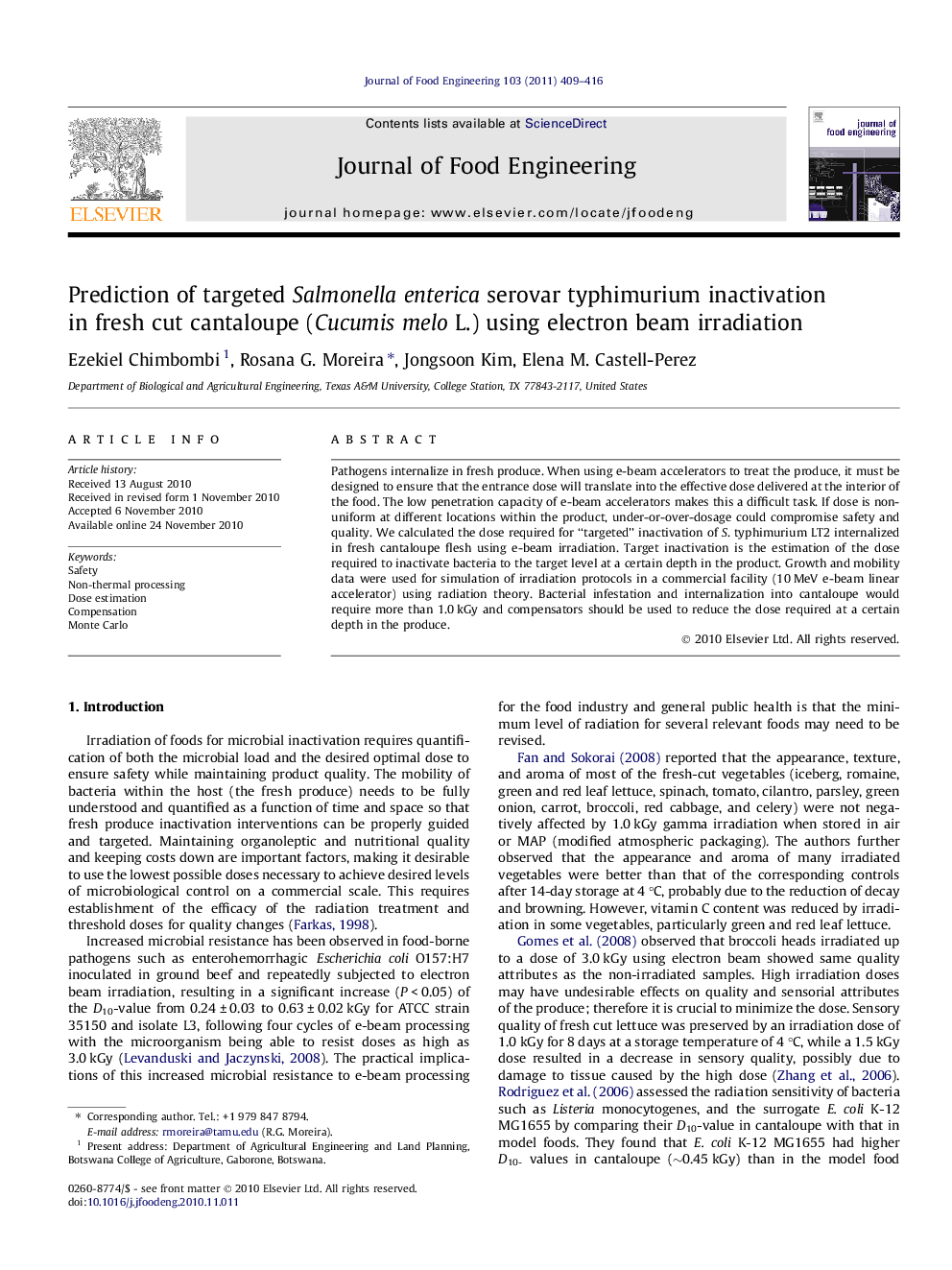| Article ID | Journal | Published Year | Pages | File Type |
|---|---|---|---|---|
| 223959 | Journal of Food Engineering | 2011 | 8 Pages |
Pathogens internalize in fresh produce. When using e-beam accelerators to treat the produce, it must be designed to ensure that the entrance dose will translate into the effective dose delivered at the interior of the food. The low penetration capacity of e-beam accelerators makes this a difficult task. If dose is non-uniform at different locations within the product, under-or-over-dosage could compromise safety and quality. We calculated the dose required for “targeted” inactivation of S. typhimurium LT2 internalized in fresh cantaloupe flesh using e-beam irradiation. Target inactivation is the estimation of the dose required to inactivate bacteria to the target level at a certain depth in the product. Growth and mobility data were used for simulation of irradiation protocols in a commercial facility (10 MeV e-beam linear accelerator) using radiation theory. Bacterial infestation and internalization into cantaloupe would require more than 1.0 kGy and compensators should be used to reduce the dose required at a certain depth in the produce.
